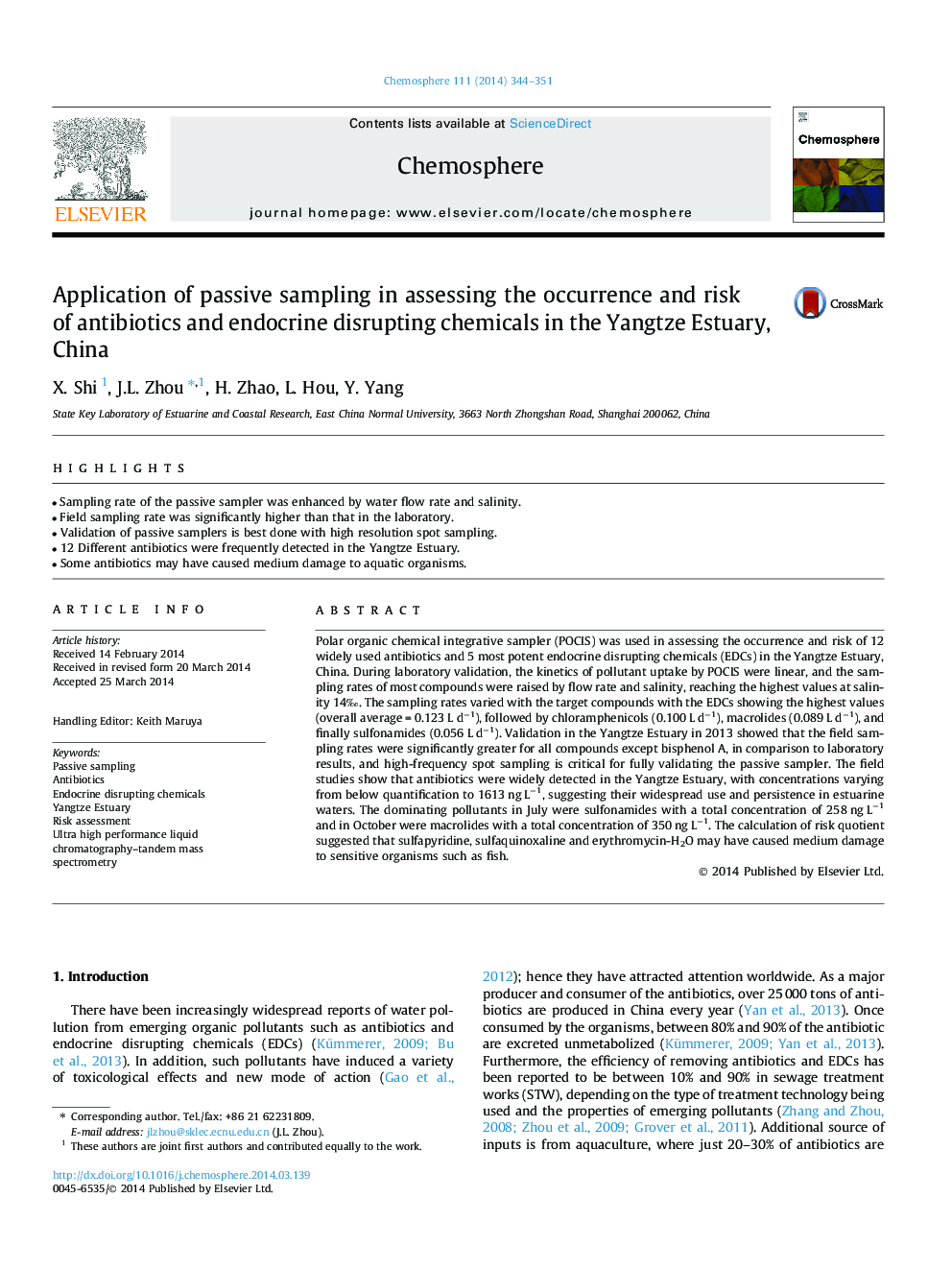| Article ID | Journal | Published Year | Pages | File Type |
|---|---|---|---|---|
| 6308686 | Chemosphere | 2014 | 8 Pages |
Abstract
Polar organic chemical integrative sampler (POCIS) was used in assessing the occurrence and risk of 12 widely used antibiotics and 5 most potent endocrine disrupting chemicals (EDCs) in the Yangtze Estuary, China. During laboratory validation, the kinetics of pollutant uptake by POCIS were linear, and the sampling rates of most compounds were raised by flow rate and salinity, reaching the highest values at salinity 14â°. The sampling rates varied with the target compounds with the EDCs showing the highest values (overall average = 0.123 L dâ1), followed by chloramphenicols (0.100 L dâ1), macrolides (0.089 L dâ1), and finally sulfonamides (0.056 L dâ1). Validation in the Yangtze Estuary in 2013 showed that the field sampling rates were significantly greater for all compounds except bisphenol A, in comparison to laboratory results, and high-frequency spot sampling is critical for fully validating the passive sampler. The field studies show that antibiotics were widely detected in the Yangtze Estuary, with concentrations varying from below quantification to 1613 ng Lâ1, suggesting their widespread use and persistence in estuarine waters. The dominating pollutants in July were sulfonamides with a total concentration of 258 ng Lâ1 and in October were macrolides with a total concentration of 350 ng Lâ1. The calculation of risk quotient suggested that sulfapyridine, sulfaquinoxaline and erythromycin-H2O may have caused medium damage to sensitive organisms such as fish.
Related Topics
Life Sciences
Environmental Science
Environmental Chemistry
Authors
X. Shi, J.L. Zhou, H. Zhao, L. Hou, Y. Yang,
